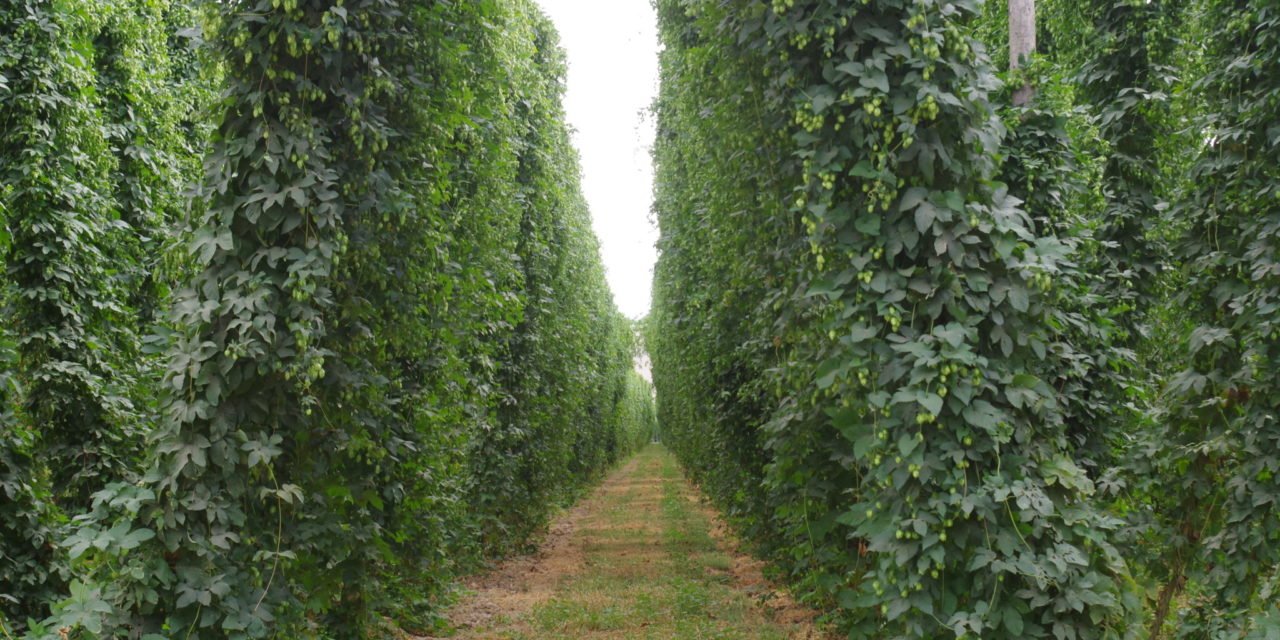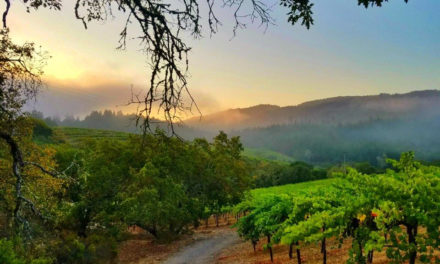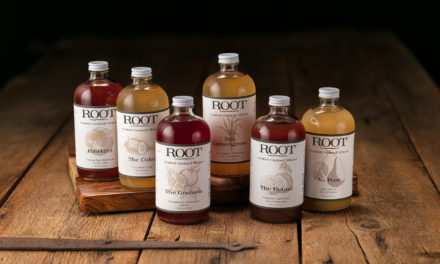 Terroir can be a mysterious concept. Loosely defined as the climate, soil, and other geographic characteristics flavoring wine grapes, terroir is often fiercely defended by the growers within named wine regions. A Bordeaux wine is not a Burgundy is not a Languedoc, and most certainly is not a Napa Valley wine.
Terroir can be a mysterious concept. Loosely defined as the climate, soil, and other geographic characteristics flavoring wine grapes, terroir is often fiercely defended by the growers within named wine regions. A Bordeaux wine is not a Burgundy is not a Languedoc, and most certainly is not a Napa Valley wine.
But can terroir translate into the world beyond wine? For many people involved in the beverage industry, the answer is emphatically “yes.” Others stick with a firm “maybe.” Researchers and beverage producers alike are seeking to define the importance of place. It can be a valuable marketing tool, they say, and lessons learned from the wine industry could benefit other products, such as beer—and even cannabis.

“Often, an AVA can be a bit of shorthand for people to determine what kind of wine they want to purchase.” —Jeremy Benson, Benson Marketing
Cannabis Jumps In
American viticultural areas (AVAs) are regulated by the federal government’s Alcohol and Tobacco Tax and Trade Bureau, commonly called the TTB. Anything involving marijuana is out of their reach. But after legalizing it for recreational use, the California legislature in 2016 ordered the state’s agriculture department to establish county-of-origin designations for cannabis, enabling growers to establish at least a regional identity. That’s not quite terroir, but the state went a step further when reconciling the two separate pieces of legislation that approved legalization; at the request of the California Growers Association, the legislature also ordered the Cannabis Distribution Association (CDA) to create a process to establish appellations of origin, including “standards, practices, and varietals,” much like the AVAs already familiar to the wine industry.
The CalCannabis Appellations Project was born in 2018, and has since been busy collecting input from cultivators. CalCannabis is required to finalize the rules for designating appellations of origin and implement the program by January 1, 2021. They will include geographical characteristics and varietals, like the wine model, but also standards and practices in cultivating cannabis, an added level the wine industry doesn’t require.
“The thinking behind that was to assist the legacy producing regions of California,” explains Genine Coleman, executive director of the Mendocino Appellations Project, an organization of Mendocino County cannabis growers working to enhance their crop’s status. Culture and practices, Coleman says, include things like growing methods handed down from generation to generation. “We want to be able to protect the culture, practices, and genetic resources of these regions and to elevate the value of the brand, specifically to support small farmers.”
Cannabis stakeholder groups have been working closely with the legislature, regulatory agencies and governor’s administration throughout the process of developing and implementing regulation. “In as much as we’re asking for appellations of origin as an additional and optional layer of regulatory standards, we’re really just trying to protect and codify our values, history, practices, and genetic resources, and then have a defensible designation to leverage in the eventual international marketplace,” says Coleman. “Appellation of origin is a space where industry stakeholders can really sit down with regulators and exchange information about the craft and its history and demographics, so a lot of knowledge can be filled in.”
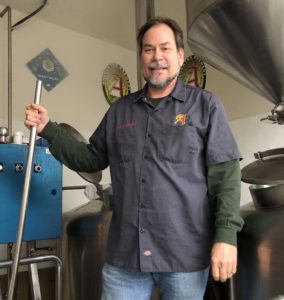
Allen Rhoades doesn’t see beer appellations forming any time soon, although a local identity is still a strong marketing tool.
Establishing an AVA
Although still being developed, the California cannabis rules will probably build off the federal requirements to establish an AVA for wine grapes, a process that’s notoriously long and detailed—but one Kevin Corliss admits he actually enjoys.
Corliss, vice president of vineyards at Ste. Michelle Wine Estates in Woodinville, Wa., was part of the team that earned approval in 2005 for Washington state’s Horse Heaven Hills AVA, and is now deep into a project petitioning for an area called The Burn of Columbia Valley. “I like a challenge,” he says. “I enjoy that historical stuff, and I enjoy digging into the data.”
TTB regulations require that an AVA petition must show distinct geographic boundaries, containing unique soils, geology, climate, and physical features, as well as a historic identity with an established and recognized name. Putting together that kind of detail usually requires a team of experts, including soil scientists, viticulturists, and plant pathologists. Corliss and his team began work on the petition for The Burn in 2017.
Many people, it seems, think the value of an AVA is worth the trouble. As of this writing, the TTB website listed 24 petitions awaiting approval. “If you have a place that’s different and really great, it behooves you to get out there and tell people so you can sell more wine,” says Corliss. The Burn boasts only a few growers right now, but he predicts interest in the area will grow. “We’re expecting it to be very different. We want to be able to market that area. People have been talking about it for decades,” he says.
Terroir can be a powerful marketing tool, says Jeremy Benson, president of Benson Marketing and former marketing director for the Napa Valley Vintners Association. It’s the creation of a story, he explains, “particularly with the wholesale and retail trade, as well as beverage managers and sommeliers in the restaurant trade.”
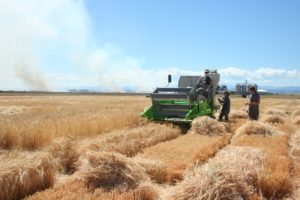
A mini plot harvest at Oregon State University
[Photo courtesy Mecca Grade Estate Malt]
Beer Terroir
The explosion of craft breweries across the country illustrates a growing interest in unique flavors and styles in a beverage that, for decades, had been developed with consistency—rather than place or vintage—in mind. When brewers began working with aromatic hops, and then searched out hops offering an array of bittering strengths and flavors, variety became the name of the brewing game.
As much as 75 percent of American hops are grown in Washington’s Yakima Valley, but growers are reticent to talk about terroir due to the lack of scientific study to reference. “While there’s certainly something to look into for terroir, there hasn’t yet been a scientifically valid study we can point to. It’s something we’re exploring,” explains Jaki Brophy, communications director for the Washington Hop Commission/Hop Growers of America.
“To do a truly scientific study, we would have to send plantings from the same hop plant to different test university plots across the country along with strict guidelines for water and fertilizer rates, making sure that each got the same treatment other than the soil and climate effects, and then had the same kilning [drying] procedures, because that affects aroma as well.”
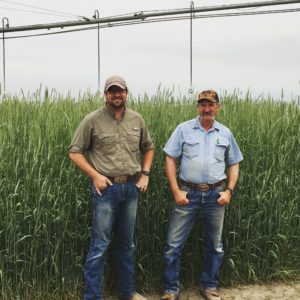
“Our whole operation here is set up on the concept that terroir in grain is real.” —Seth Klann, Mecca Grade Estate Malt (left)
Unlike wine, which is created solely from grapes and yeast, beer includes four ingredients—water, hops, yeast and malt—making it even more difficult to parse out terroir effects. Hop flavors are easy to pick up, but now brewers have turned their interest to barley, the source of malt. Patrick Hayes leads studies at Oregon State University, funded by the Brewers Association, questioning whether barley contributes to beer flavor. His research has, so far, been limited to just a few strains, including Golden Promise, Full Pint, and their progeny, and to a small geographic area. The results have been positive: Different types of barley do, indeed, when malted, contribute different flavors to beer.
“The genotype of barley makes the largest contribution, followed by growing environment,” he says. “Flavor depends, to some extent, on the malting process, but there’s something about the genotype beyond malting that’s unique to flavor.”
That’s still not terroir—no one has, so far, compared the flavors of the Golden Promise selections grown in very different environments—but Hayes isn’t done yet. He plans to focus his research next on different barley genotypes and the larger question of the influence of place on the crop’s flavors.
Seth Klann has worked with Hayes’ research project, tending test plots of barley at his family’s farm near Madras, Ore., and malting it at his Mecca Grade Estate Malt house. He has a craftsman’s faith in the terroir at his farm.
“The whole thing is patterned off an estate vineyard and winery,” he says. All of the grain processed at Mecca Grade is grown on the Klann farm. “We’ve been farming here since 1905, so we know the ground really well. Our whole operation here is set up on the concept that terroir in grain is real, but the only way you’ll be able to taste that is if you work with it and malt it a certain way.”
To prove that, he works to eliminate variables in growing conditions as well as in the malt house. “If we keep seeing these flavors pop up in our malt year after year, then we can start to say, ‘OK, this is the flavor of our farm.’” But, he adds, “That begs the bigger question of whether or not terroir is marketable.”
Reframing the Conversation
Allen Rhoades, co-owner of Anacortes Brewery in Anacortes, Wash., and chairman of the Washington Beer Commission, doesn’t see beer appellations forming any time soon, although he says a local identity is still a strong marketing tool.
Rhoades points out the many tendencies toward terroir that have historically driven beer production. “Different styles of beer were developed in different parts of the world, based on what they could grow there,” he says. “Scottish ales generally aren’t very hoppy, they’re malt forward, because hundreds of years ago, they weren’t growing hops. And they were using peat to run their malting floors and boil kettles. That’s terroir, but no one really thought of it [that way] until recently.”
See also: Does Cider Have Terroir?

